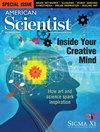Reading Mathematics
IF 0.6
Q4 MULTIDISCIPLINARY SCIENCES
引用次数: 0
Abstract
In this study of my sixth grade mathematics class, I investigated how using reading strategies, a structured problem-solving form, and math-infused literature impacted students’ success in solving word problems and building geometric vocabulary. Direct instruction of reading strategies and the use of those reading strategies in a structured problem-solving group increased my students’ confidence in their own abilities to solve word problems. The structured problemsolving form served as a reminder of the strategies and the steps students should use when reading and solving a word problem. Students wrote in their journals that they liked the reading of the “Sir Cumference” stories, and they incorporated the geometric vocabulary from those stories into their own mathematical register. As a result of this research, I learned that in this action research period, structured group problem solving with reading strategies increased the ability of my students to solve word problems and that reading the “Sir Cumference” stories by Neuschwander helped in the development of geometric vocabulary. In the future I will use a structured group problem-solving approach after I have taught reading strategies. I intend to use the “Sir Cumference” stories to aid in geometric vocabulary and concept development. Reading Mathematics读数学
本文章由计算机程序翻译,如有差异,请以英文原文为准。
求助全文
约1分钟内获得全文
求助全文

 求助内容:
求助内容: 应助结果提醒方式:
应助结果提醒方式:


